Our History
A Legend in Colorado Ski History Since 1946
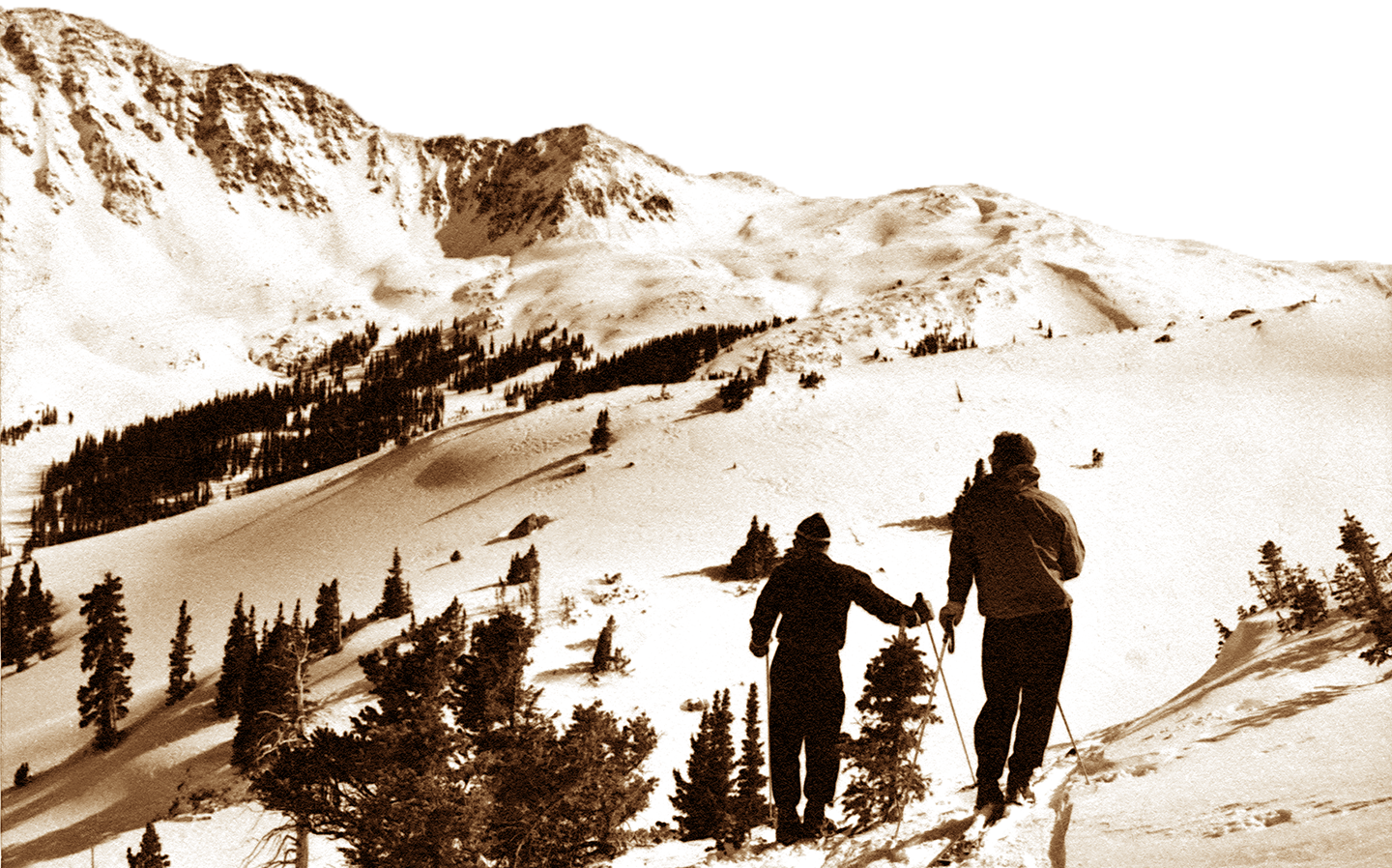
Founding Arapahoe Basin
Arapahoe Basin came to life in 1946 as a scrappy, shoestring passion project that was hand-built and partially funded by our ski-obsessed founders.
Larry Jump and Sandy Schauffler formed a ski company and put together a proposal for Arapahoe Basin only a few months after laying eyes on our location. The two former ski racers and WWII 10th Mountain Division veterans had been hired to survey Colorado’s winter sports potential. In the basin below Loveland Pass, they saw potential to re-create the high, steep, snowy skiing they loved in the Alps.
Larry sank his life savings of $25,000 into A-Basin. With the help of his eventual wife, Marnie, as well as Thor Groswold, Dick Durrance, Max and Edna Dercum, and U.S. Forest Service ranger Wilfred "Slim" Davis, A-Basin opened after just five months of prep work with one rope tow from mid-mountain to the summit and grew to become one of the most beloved ski areas in the country.
A-Basin was the first post-WWII ski area to open in Colorado and is the oldest in Summit County (home to 4 major ski areas). That first season, skiers were transported to the base of the rope tow in a surplus Army weapons carrier pulled by a four-wheel drive vehicle. Nicknamed “The Monster,” skiers got three rides in the hulking 4x4 for a $1.25 lift ticket.
When the 1946-47 season ended, 1200 people had visited, and A-Basin was $45,000 in debt. Marnie would later say that it was "Larry's courage and heart that kept Arapahoe going."
Much has evolved over the years, from major terrain expansions to unique restaurant additions, and A-Basin now operates one of the youngest lift fleets in the country with a winter-season staff of more than 400 people. But we still feel just as passionate as our founders did when they first laid eyes on this place.
Our commitment to the joy of skiing and riding is unwavering, as is our desire to steward this special landscape. Even as our food has become some of the best in the business, even as we have grown to include summer operations, A-Basin is—ultimately—still run by passionate skiers and riders who want this place to be about an awesome experience. A-Basin is still The Legend.
1940s & 50s: The Founding Years
"Hope and anticipation running amok."
Larry Jump, who would manage A-Basin alongside Marnie for 25 years, described the startup years as “a marvelous mystery with hope and anticipation running amok…We invented, improvised, and gambled to keep the lifts functioning.”
He also noted that in the 1940s and 1950s, A-Basin was known as an “off-beat, somewhat suspect ski operation operated by a small group of non-traditional and unpredictable Easterners who did things differently.”
In many ways, the founder's goal was to re-create the environment that Larry and other Camp Hale veterans (soldiers trained for winter combat on skis) fell in love with while skiing in Europe. After the war, nearly 2,000 veterans became ski instructors across the U.S.
The veterans also injected into American ski culture their tradition of “gemutlichkeit.” It means geniality and friendliness and was translated on skis as camaraderie marked by drinking, singing, jokes, stunts, and feats of strength.
Groups across the country had an open invitation to ski A-Basin. In addition to WWII veterans, regulars included university alpine race teams, Denver ski clubs, local scout troops, and nuns from the Loretto Heights Catholic women’s college.
Race training, world-class lesson programs, and competitive ski events landed A-Basin on the map and built its standing beyond the scrappy startup the U.S. Forest Service once deemed a problem child (partly for its unmanaged, “hope-for-the-best” skiing in the Pallavicini terrain).
The founders were all about the pure fun of skiing, but they also had their hands full.
We all did everything in those days: parked cars, sold tickets, cleaned the johns, tramped the runs. We’d spend Saturday night up at Midway with the ski patrol and play hearts all night. The losers had to get the fire going and make coffee, and then we’d all tramp down the runs to pack the snow.” - Marnie Jump in a 1997 Ski Magazine interview. She was A-Basin’s first vice president, beginning in the late 1940s.
That spirit of no one being above helping out with random jobs lives on today. Look for our COO, Alan, parking cars on a busy Saturday.
A-Basin merely survived in the 1940s, largely on the founders' grit, spirit, and sweat equity. All operating profit went back to capital expenditures. During the summer construction months, the owners and operators lived on-site in tents and makeshift shelters. They milled lumber, repurposed old mining equipment, and made repairs to keep the ski area going and growing.
A turning point happened in 1953 when a Pomaglaski (aka Poma) Lift was installed at A-Basin – the first in the U.S. Built from the base to mid-mountain, it was the steepest Poma Lift in the world at the time.
A-Basin acquired exclusive rights to U.S. Poma distribution, which allowed it to buy new lifts at a discount. Larry Jump, as a Poma's sales rep, sold scores of surface lifts to startup ski areas from the Wasatch to New England, providing much-needed capital to A-Basin.
1960s & 70s: The Ski Boom
“Crowds a bother? Ski A-Basin."
Skiing came of age in the U.S. in the 1960s, and A-Basin was coming along with it. Reporters across the country recognized A-Basin as offering ski terrain as good as in the Alps and celebrated its long season, November to June. One local paper wrote, “Every skier knows of the [Pali], the run considered one of the seven most difficult in the country.”
A-Basin began to look like a modern ski area with the construction of two double-chair lifts and a lodge. After a failed foray into providing base-area lodging (people found it was uncomfortable to sleep above 10,500 feet), the short-lived Arapahoe Chalet burned down in 1964, and the skeleton of the current A-Frame building was built on the leftover foundation.
The lack of crowding that we cultivate and celebrate today also has its roots in the 60s when A-Basin ran ads in Midwest newspapers reading, “Crowds a bother? Ski A-Basin. Prices too high and slopes too low? Try A-Basin.”
Thanks to that lack of crowding and high slopes, A-Basin was also finding its core people. As Winter “resorts” burgeoned across Colorado, the affordable lift tickets and challenging runs at A-Basin drew people who just wanted to ski and weren’t interested in excessive frills.
A-Basin kept its arms open, welcoming skibobs (precursors to ski bikes) and launching a veteran’s amputee skiing program that later expanded to include patients from Children’s Hospital in Denver. (The program was taken over by the National Sports Center for the Disabled in 1972 and moved to Winter Park.)
But, behind the scenes, things were changing. The planned Eisenhower Tunnel was going to divert traffic away from A-Basin. In 1971, the Forest Service sent A-Basin a scathing letter outlining everything that needed to be fixed or upgraded. And, after 25 years, Larry and Marnie Jump were ready to move on. When strong winds knocked over a Norway Lift tower in 1972, the Jumps decided they were done. They sold A-Basin to Joe Jankovsky for $850,000.
Joe had previously managed A-Basin operations from 1962 to 1970. Though he owned the ski area for only six years, many remember his era as their favorite time at A-Basin. Joe focused on making critical infrastructure upgrades, repairing A-Basin’s tarnished image, and cultivating the laid-back vibe still prized and maintained today.
“Skiing at the Basin in the 70’s was a trip. Warren Miller movies, Pepi Steigler and Billy Kidd race camps, Jefferson Starship crew skiing the Basin, gelande jumping on Pale Face … big air off the cornice—it was all about the skiing. There were skiers up at the Basin who were some of the most incredible skiers you will ever see, doing some of the wildest things you could ever imagine. Like patrolmen having jumping contests off King Cornice with rigs …
Life was just one giant adventure that you got to share and toast to with all of your best friends. And then there were days when you just gave it up and ‘skied Mahogany Ridge’—that would be hanging in the pub.” – Cathy Chaplin, former A-Basin employee"
The Ski Safety Act of 1979 introduced stricter ski lift construction, maintenance, and operation oversight. A-Basin needed major upgrades. Rather than figure out how to raise $5 million to accomplish the task, Joe chose to sell the ski area.
1978-1996: The Sale of Arapahoe Basin
"We called ourselves the stepchild."
Ralston Purina, owner of Keystone Mountain at the time, purchased A-Basin in 1978 for $3 million (about $13 million in 2022 dollars). The reason was clear: A-Basin’s expert terrain was intended to supplement Keystone’s beginner and intermediate offerings (Keystone is 5 miles West of A-Basin). A-Basin was treated and managed as an extension of Keystone, from sharing administrative departments to sharing lift tickets.
Over the next 18 years, Ralston would bring stability and modernization to A-Basin while enhancing its reputation as a fun, challenging mountain.
During Ralston's purchase and upgrades, Jon Reveal was A-Basin’s manager (and is the namesake for Lake Reveal, the springtime, upper-mountain pond skim). Forty years later, he had this to say:
“We called ourselves the stepchild … I say that with regards, regret, and affection. It made us who we are today … We made A-Basin what it should have been—a ski area for skiers, the new and coming snowboard group, people exploring the outer reaches of their abilities, like skiing out in The Beavers then walking back up to the road. It is a wonderful niche—for the real true skiers…”
Ralston's ownership also coincided with the Jim Gentling era. An A-Basin ski patroller in the 1970s, he was general manager from 1985 to 2005. One of Jim’s early projects was protecting the Pallavicini Lift construction in 1978. The “Basin Liberation Organization (BLO)” had formed in protest, not wanting the coveted, extreme terrain to be easier to access. For weeks, BLO and Jim battled over removing survey stakes and flagging. He stayed on-site each night until the tower foundations were set.
At the time, there was almost no skiing like the Pali terrain at a Colorado ski area. Before the lift installation, the area often didn’t open until March. Since then, extreme skiing has come into place, but A-Basin had it originally. Pali also ushered in The Beach as we know it. Skiers would lap the new lift and the 1,300 feet of steep terrain it accesses, then gather to tailgate in the adjacent parking lot.
Snowsports were full-tilt in the 1980s. A-Basin was one of the first Colorado ski areas to welcome snowboarding, ski bikes, snowskates, whatever. Local diehards were camping in A-Basin’s parking lot, working nights, and getting runs 200 days a year. A group called the “Atomic Janitors” slept in the attic of the A-Frame, skied all day, and cleaned the buildings after the lifts closed.
Competitive freestyle mogul skiing, freeskiing/big-mountain skiing, hot-dogging in Day-Glo attire, and wild events like Bumps & Bikes and the Cardboard Derby were also big at A-Basin in the 80s and 90s. They set the foundation for some of the quirky flavor that lives on today in events like 2019’s Pit Viper World Record Ski in Jeans Day and the annual swimwear party.
A-Basin also hosted the Mogul Masters, a freestyle pro event, for almost 20 years and became one of the big-mountain training homes of Team Summit—where several Colorado X-Games and Freeride World Tour skiers got their starts (and continue to train today).
1996-2019: Arapahoe Basin Declares Independence
"Maybe the best thing we have done is keep the vibe the same."
Merger Mania hit the ski industry in the 1990s. Ralston spun off its ski-area holdings into a new company that merged with Vail Resorts, which suddenly accounted for 43 percent of Colorado ski areas.
The U.S. Justice Department balked at the potential for market dominance. In 1996, after less than one year of ownership, Vail Resorts put A-Basin on the market. Almost untouched since the initial 1978 acquisition by Ralston, A-Basin was extremely rustic and dated. Still, more than 60 potential buyers made inquiries.
“Whoever buys it should do it for the love of skiing, pure and simple. Nobody has ever gotten rich of the Basin…” ski journalist Peter Shelton.
A-Basin was acquired by Dundee Resort Development of Canada (now DREAM, the current owner), freeing the ski area to come into its own. A declaration of independence was signed by A-Basin employees following the purchase. Part of it read:
“We hold these truths to be self-evident, that all ski areas are created common and equal, except, of course, Arapahoe Basin – ‘cause we have the Pali Chair! – whose loyal friends are endowed by Dundee Realty with certain unalienable rights, that among these are: A Fair Deal, Liberty, and the Pursuit of Fresh Tracks.”
Dundee and A-Basin had just a few months to build an independent business. Many of the people you know and love who lead A-Basin today joined during Dundee’s early years, including current COO Alan Henceroth, who was the ski patrol director.
“We thought, how hard can it be, running a ski area? We found out it’s a lot harder than it looks … We just kept motoring along, making changes … Certainly all the progress we have made has been in improving the assets and experience and revenues … But maybe the best thing we have done is keep the vibe the same. The lifts are better, the snow is better, the restaurants are better … but it is still the Basin that everybody loves.” -- Greg Finch, Dundee’s vice president during the early years of A-Basin ownership
Two things that have not changed are the trust Dundee/DREAM maintains in A-Basin staff to know what’s best for its guests and an emphasis on upgrades and improvements. Dundee would invest $15 million in the first decade alone, including installing snowmaking for the 2002-03 season.
“We have an amazing consistency. That’s the first and foremost quality, keeping it the same—comfortable, warm, traditional, and casual … We need to have positive growth without impacting the tradition.” – General Manager Jim Gentling in 2002
Alan took over as COO in 2005 as terrain growth and infrastructure improvements accelerated. Through 2019, A-Basin expanded from 900 acres to more than 1,400. The ski area added Montezuma Bowl, The Beavers, The Steep Gullies, Black Mountain Lodge and il Rifugio at Snow Plume Refuge, and the Black Mountain Express Lift.
In 2018, A-Basin developed a strategic sustainability plan to get the ski area to carbon neutrality by 2025. Its six aggressive sustainability goals impact all business areas and sweepingly affect how the ski area operates. You can learn more about that here.
Now: Arapahoe Basin's Golden Age
"The place just keeps getting better."
Under Alan's leadership, A-Basin entered a new decade by refocusing on what makes a great ski-and-ride experience rather than putting as many people on the mountain as possible.
In 2019, A-Basin separated itself from Vail Resorts a second time, leaving the unlimited and unrestricted Epic Pass after a nearly 20-year partnership. The access provided by those pass products helped introduce a whole new generation to A-Basin. However, by the late 2010s, that level of access was also overwhelming the ski area's infrastructure with record crowds and diminishing the experience for both guests and staff.
Step one was to acknowledge that the arrangement was no longer tenable and that A-Basin needed to prioritize quality over quantity. Step two was joining the Ikon Pass on a limited basis beginning in the 2019-20 season (a recognition that many skiers and riders prefer a multi-mountain pass product). Step three was limiting both the sales of unrestricted A-Basin season passes and the number of lift tickets sold each day.
All that was done to mitigate crowds put less stress on the terrain, reduce parking hassles, and shorten lift lines. As hoped for, crowds were significantly reduced (the goal was a 20% reduction in skier visits for the 19-20 season, which was achieved). A-Basin began to feel like A-Basin again: a beautiful, challenging, laid-back ski area with room on the slopes and at the bar.
Twenty-twenty also ushered in year-round operations at A-Basin with the expansion of summer activities, including an aerial adventure park, new hiking and biking trails, a world-class disc golf course, special dining events, live music, and--in 2020--North America's highest-elevation via ferrata climbing route.
More than 75 years later, the lifts are newer, the food is better, the skis are wider, and the photographs are in color.
But, the terrain is still some of the steepest and most adventurous in the U.S. (just with avalanche management). A-Basin is still home to the longest Winter season in Colorado, with bathing suit- and costume-clad skiers and riders shredding spring slush well into June and sometimes July. People still meet their significant others in the Pali Lift line. And the staff are all still here on the mountain every day--from lift maintenance to marketing--rubbing shoulders with the guests and striving toward the same thing: a day worth repeating.
"It's easy to predict that Arapahoe Basin's future is very bright. With a reputation and a brand that includes great character and even better terrain, The Basin is the kind of place skiers, riders, and other mountain travelers aspire to visit. Consistently ranked as one of the best ski areas in the country, The Basin has some of the finest terrain and most consistent snow in Colorado...
Throughout the seemingly never-ending change and excitement, one constant remains: the people that choose to make Arapahoe Basin part of their lives. Some are employees who choose to spend a winter working here and then continue on their journey in life. Some are employees who stay and make a career at The Basin and spend years or decades operating the resort and delivering fun for skiers and riders. And some are guests that soak in the mountain setting, slide on its spectacular snow, and relish the A-Basin culture. Together, all of these people have created one of the finest gems in skiing. The place just keeps getting better."
- Alan Henceroth, 2019
All of the information on this page was excerpted from “Arapahoe Basin, A Colorado Legend since 1946.” The book was co-authored by Cathleen Norman and Alan Henceroth and published in 2020. To get the full story and learn more about A-Basin's history, Colorado ski history, and the unique characters who have made this place tick over the decades, pick one up in our online store or buy in person the next time you come see us!


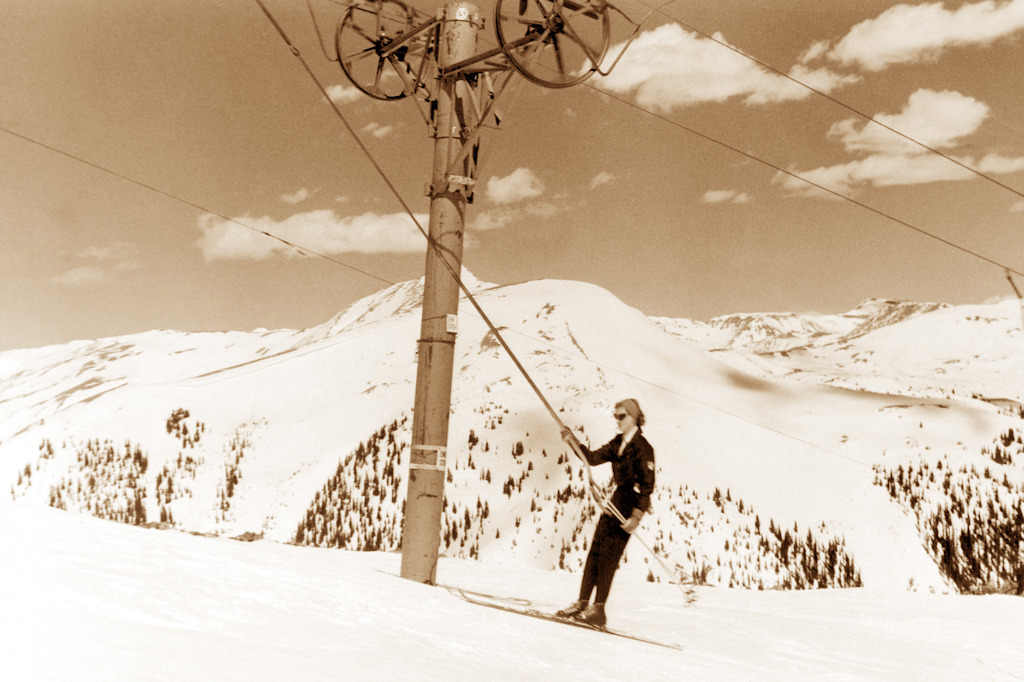
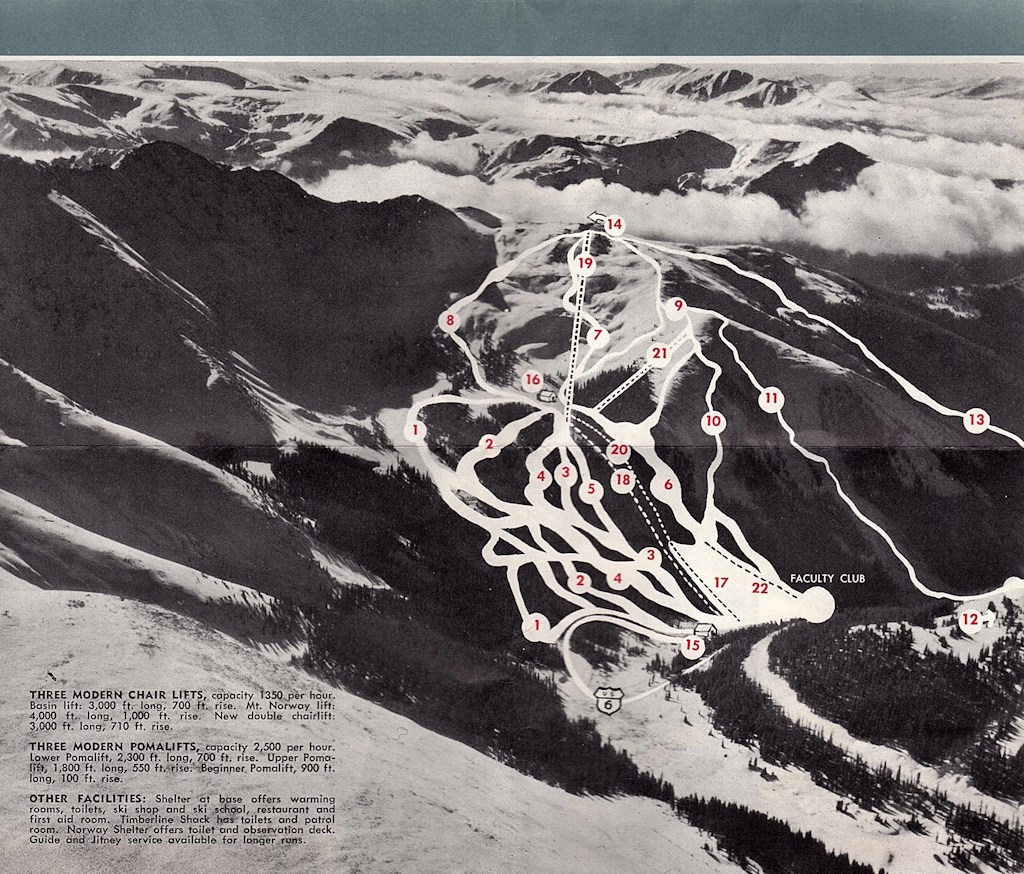
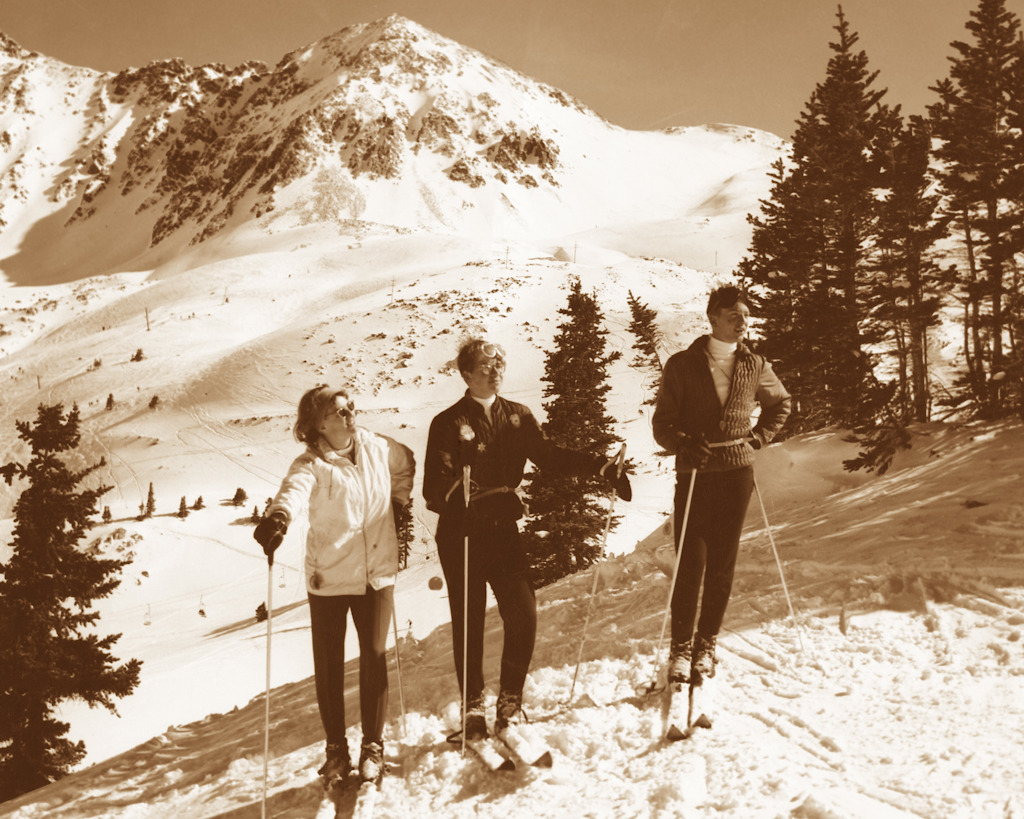
.jpg)
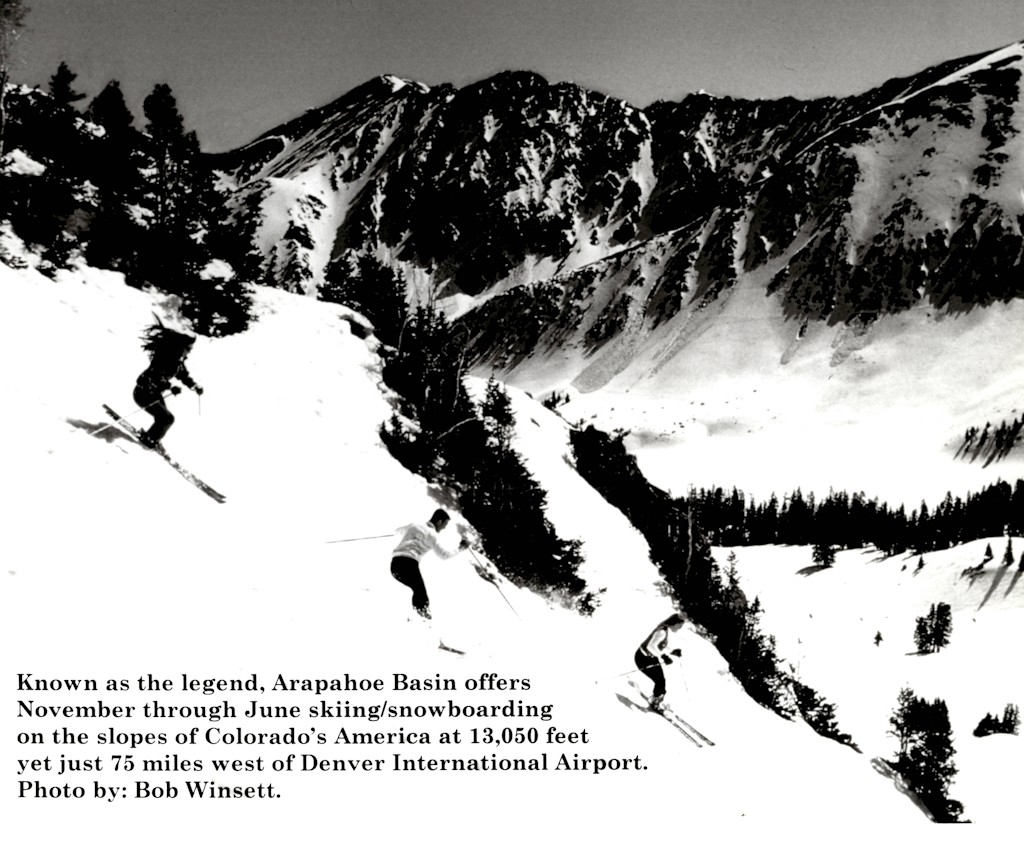
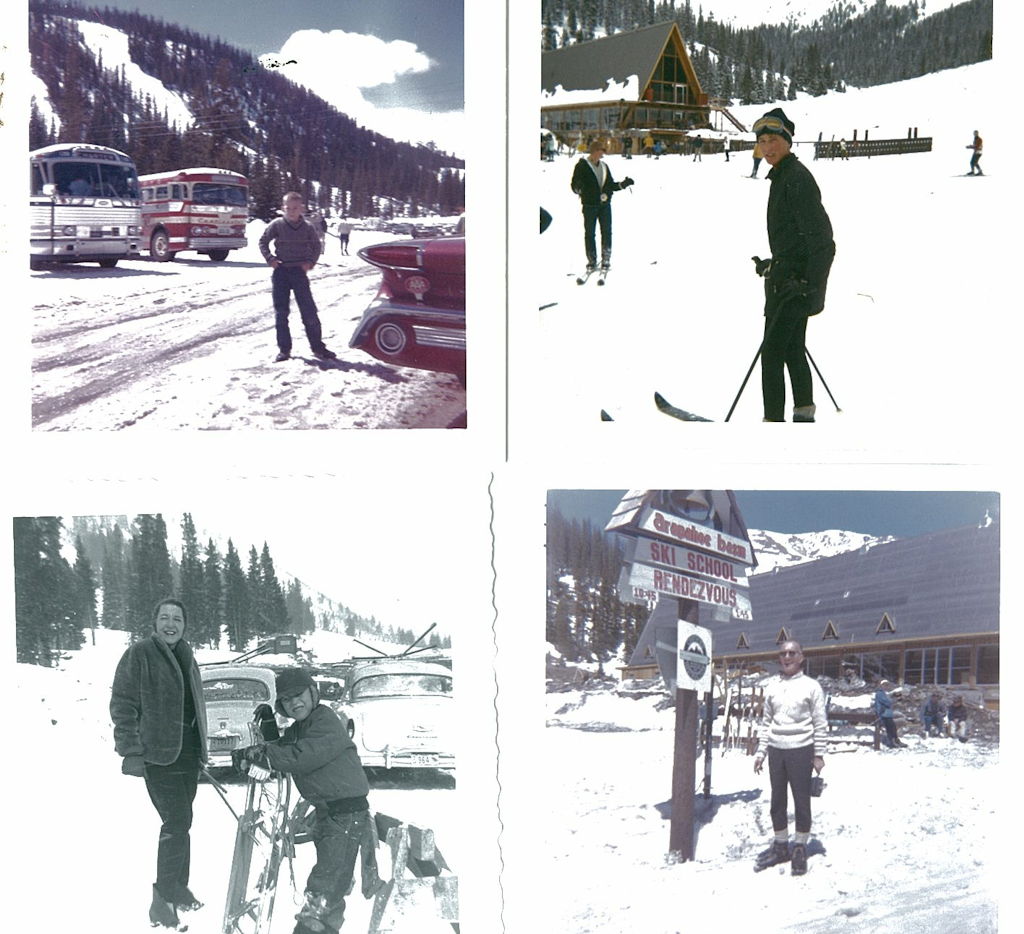
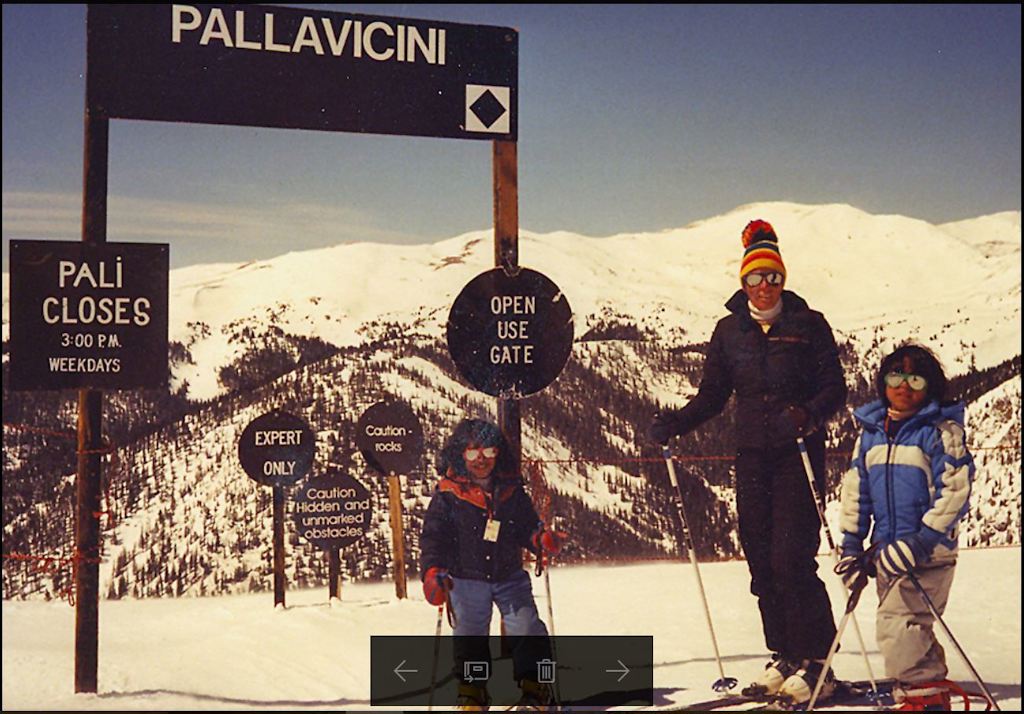
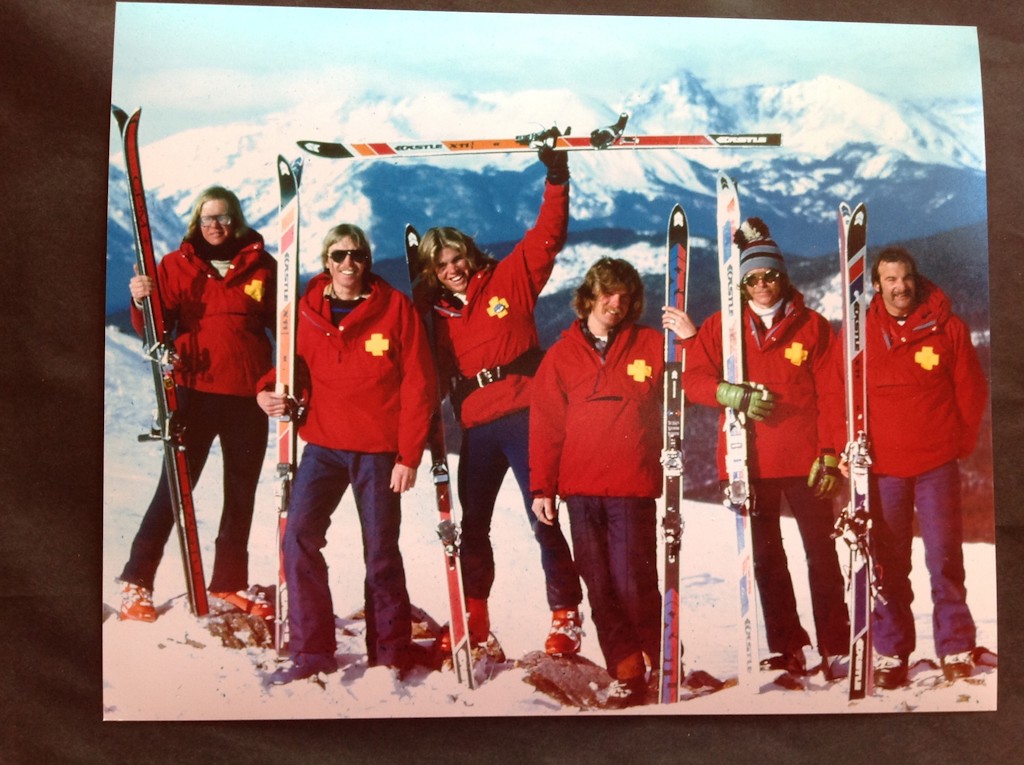
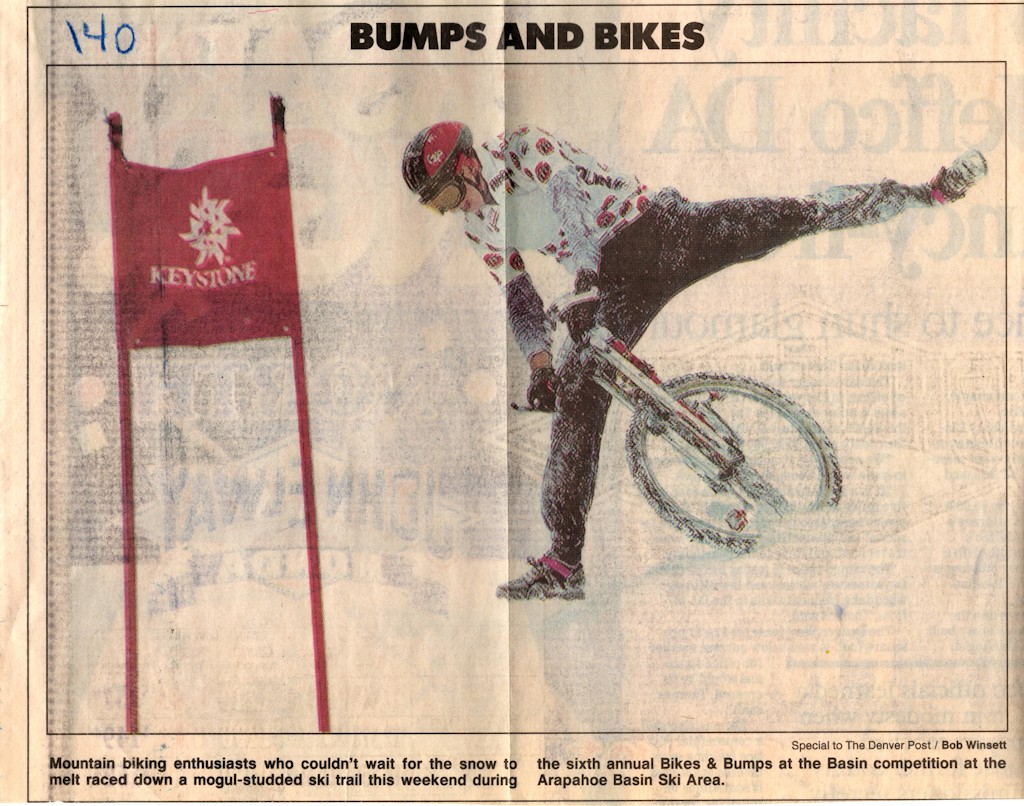
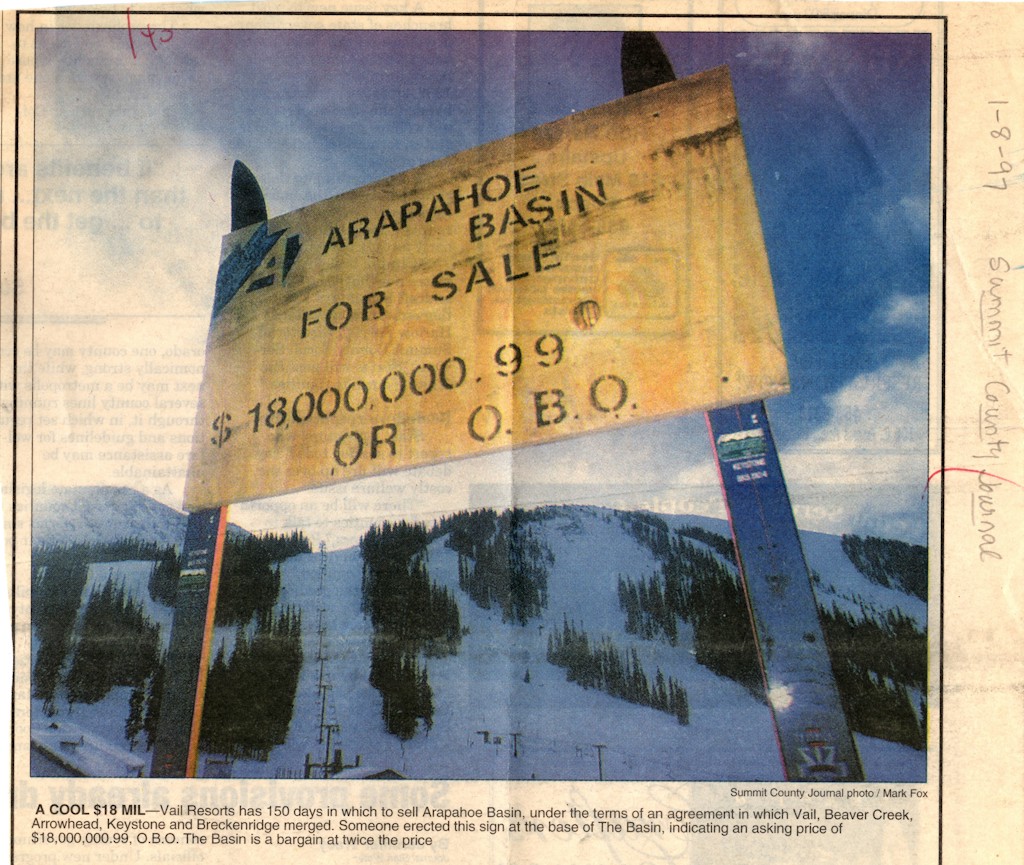
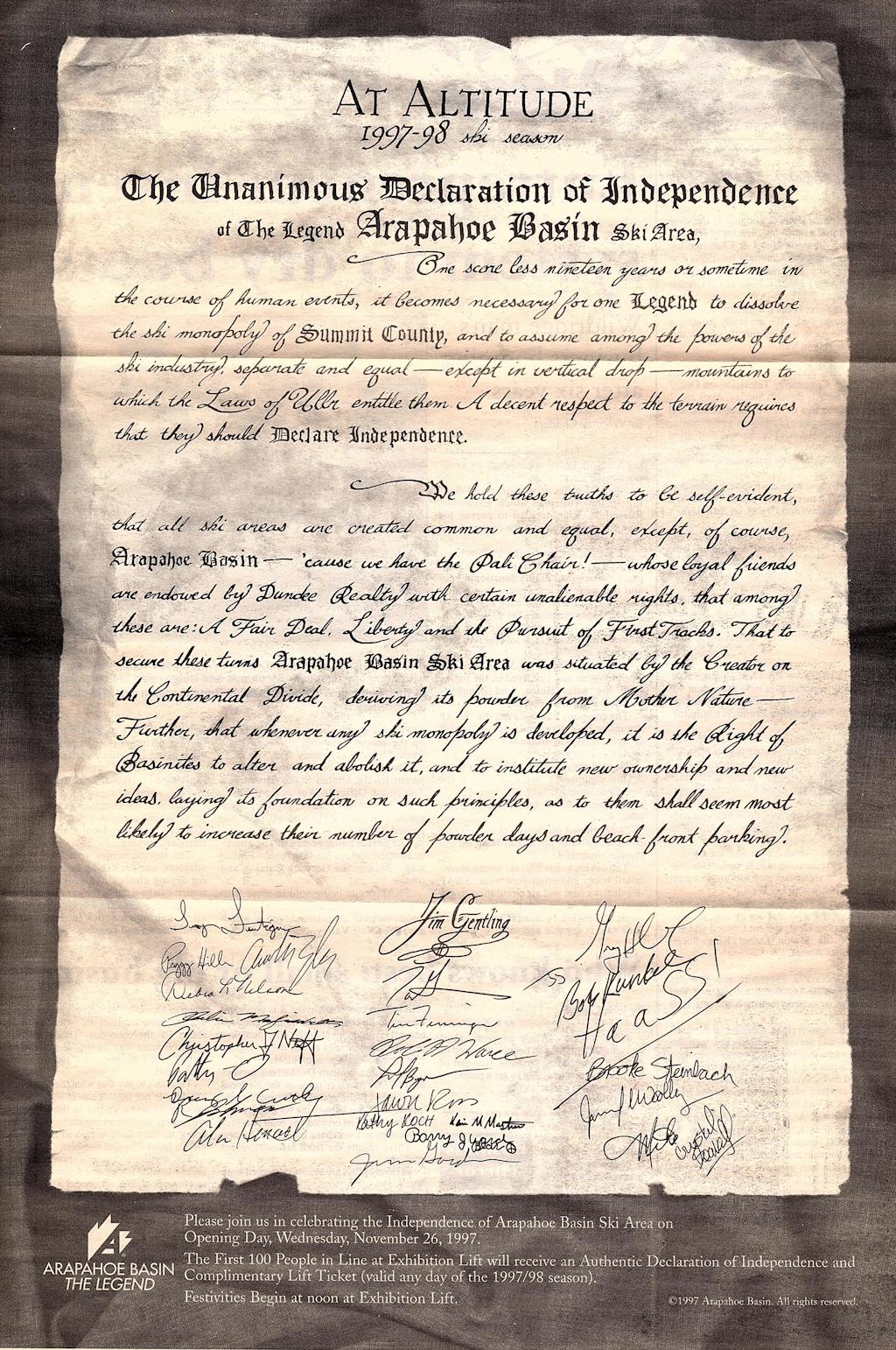
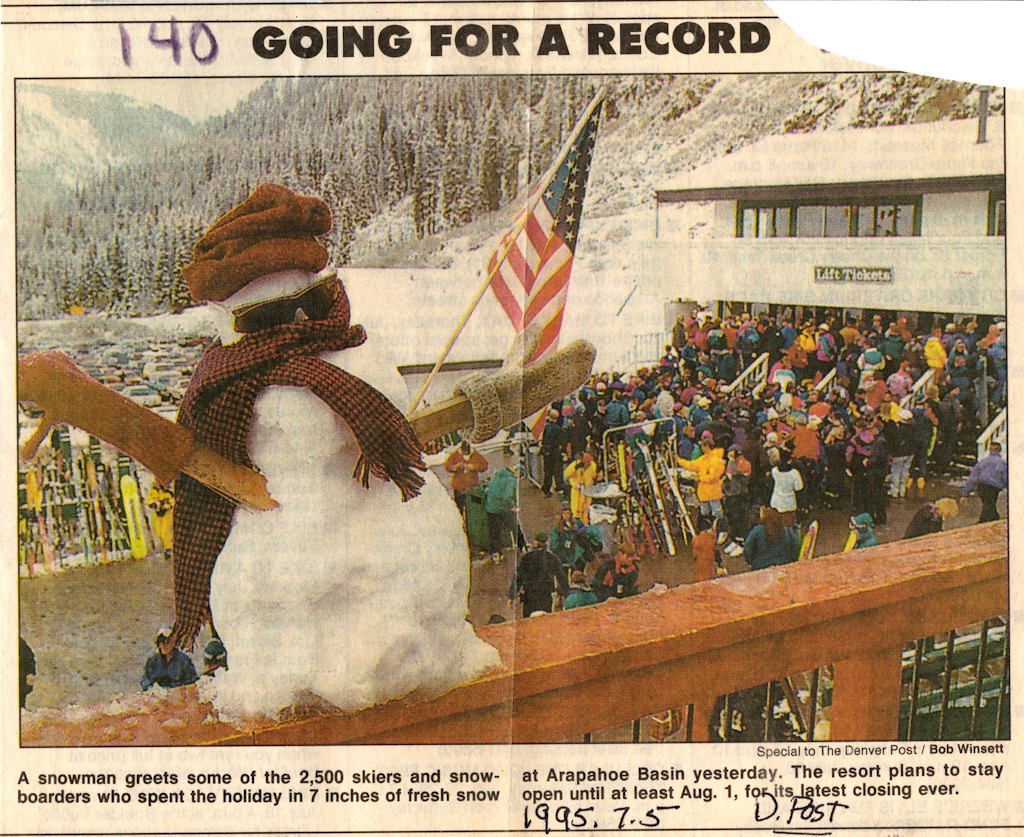
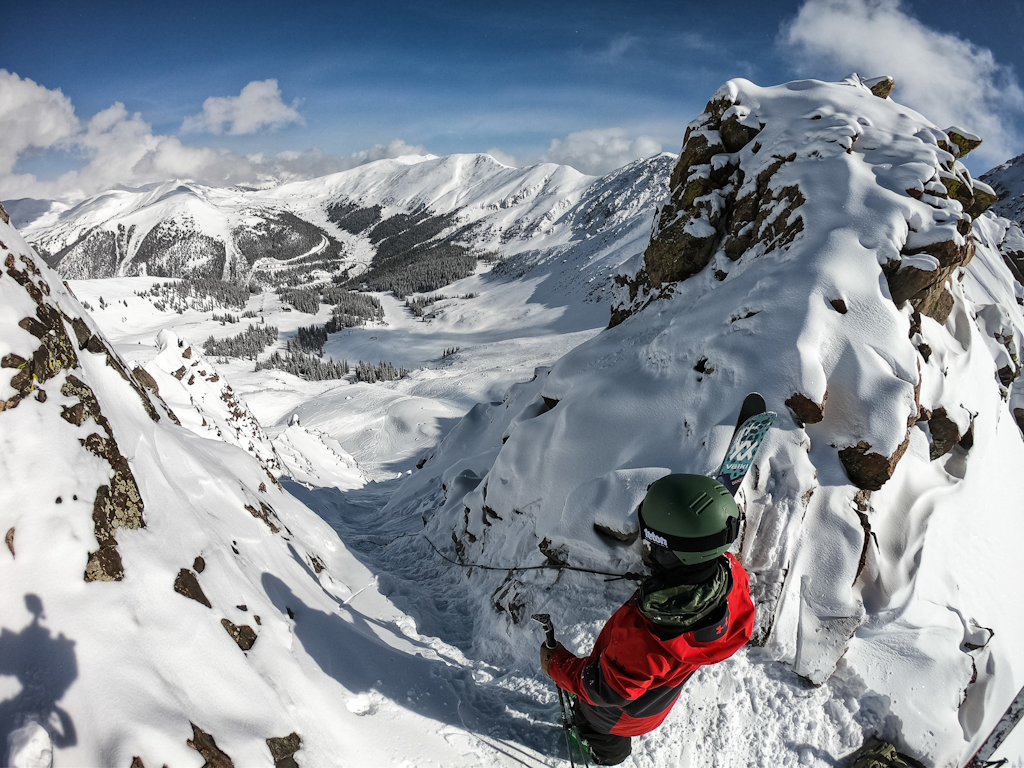
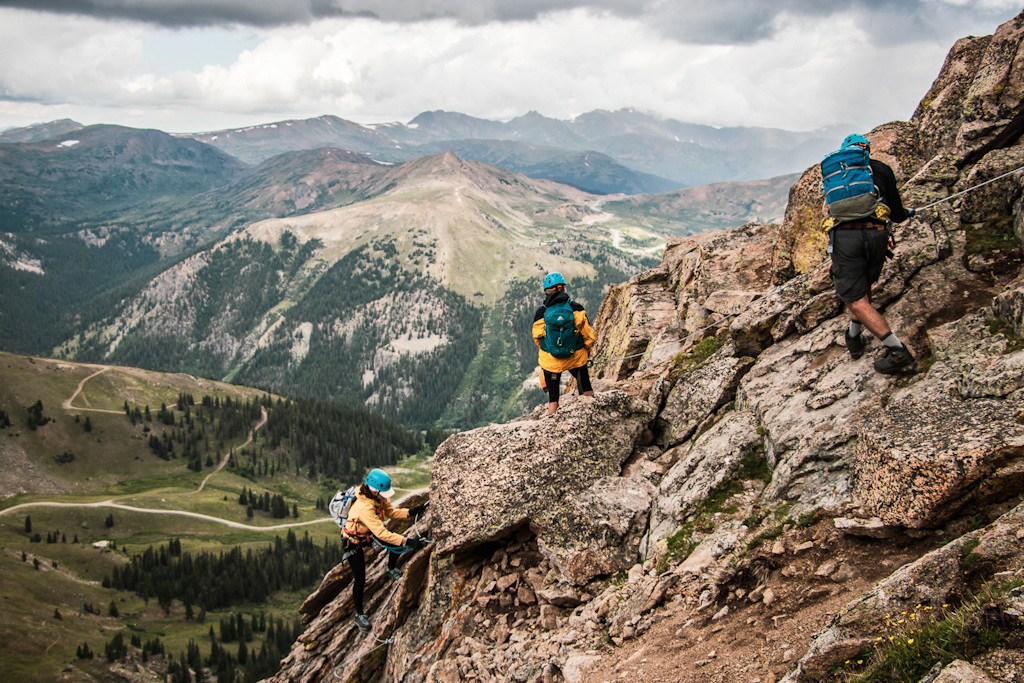
.jpg)